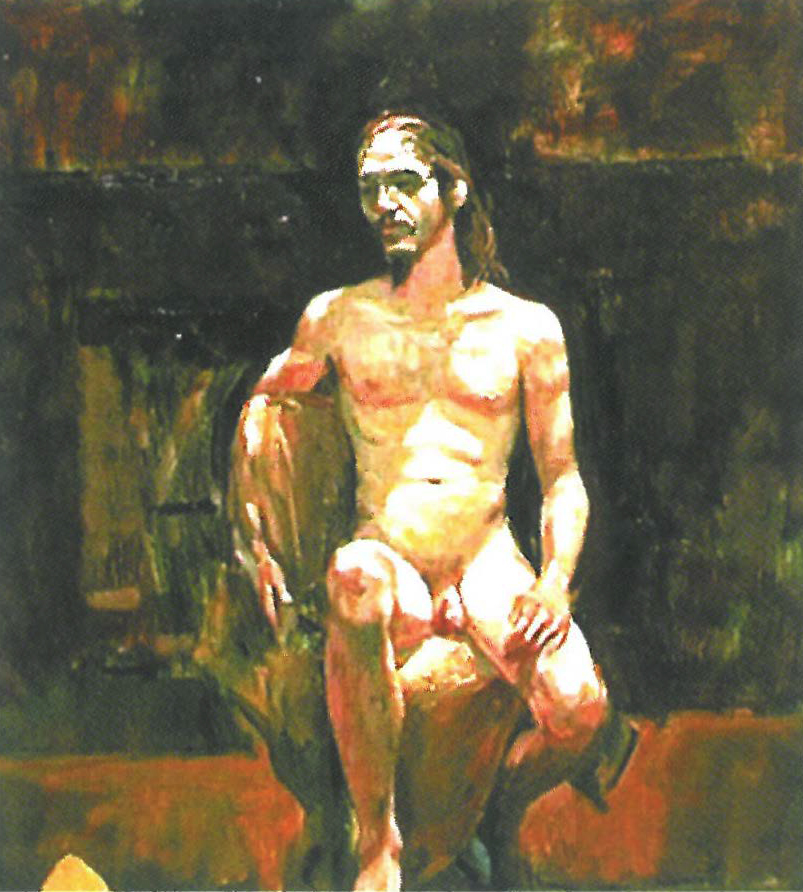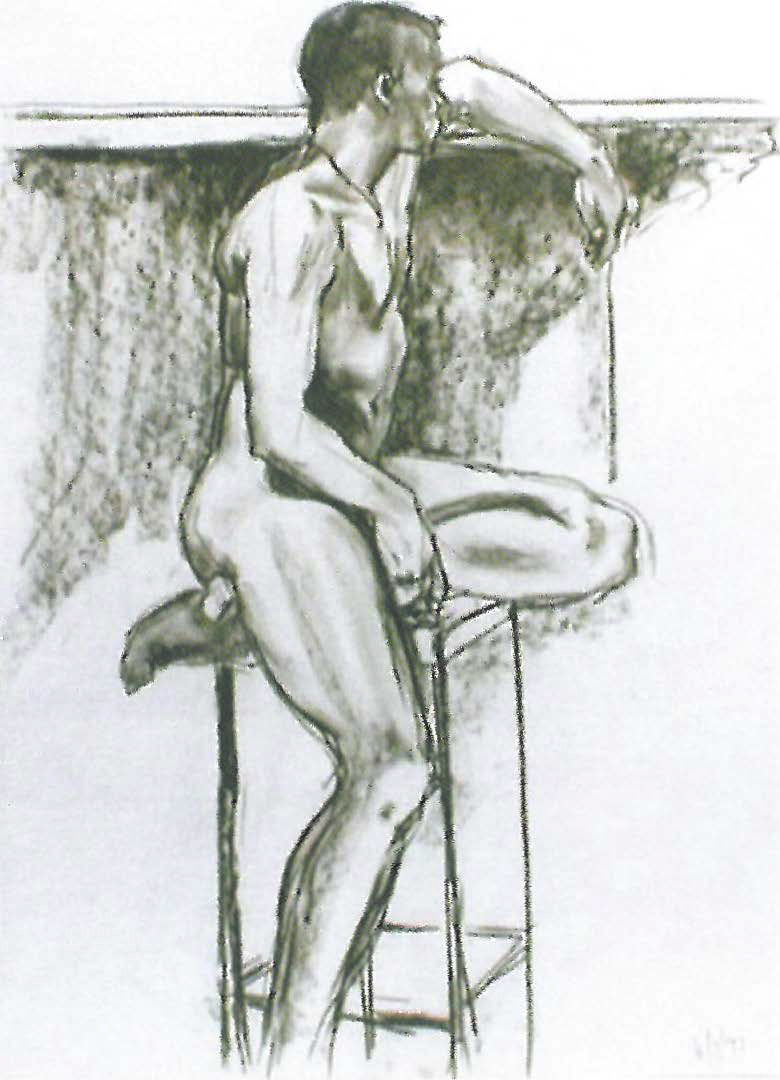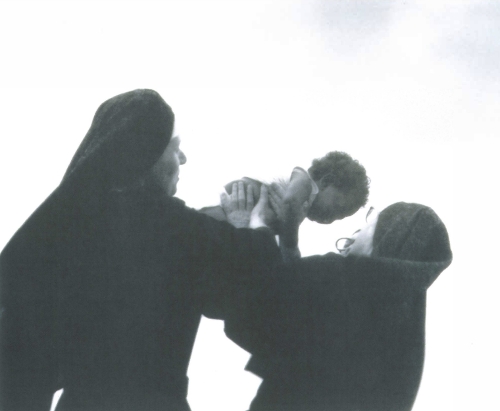
The more we see the more we must be able to imagine; the more we imagine, the more we must think we see...
This quote from Doris Lessing appears in handwritten script, that one has to turn the head sidewards to read, in an ink wash, pen and collage on paper work by James Gleeson (b. 1915) dated 1976. Perhaps the text is an afterthought, perhaps the art was created with the text as its source. Having read it the viewer consolidates a private contract between the producer and consumer. This is an exhibition about the privacy of production and also consumption.
The considerations from the curator in developing the exhibition are multi-layered: it is in a commercial gallery; that is a major consideration. It is part of Melbourne's Gay & Lesbian Midsumma Festival; the exhibition takes a broad-based stance on its role within. From the curator (he arrived in Melbourne from Kiev as an adolescent with a curiosity about the male form, as represented in art) an interest in the male nude in Australian art became a focal point in his desires and research of our culture. This exhibition is a most satisfying realisation of his efforts. The central thrust of the show was developed when the curator asked some key Melbourne-based figurative artists if they had any male nudes in their portfolio. Artists were solicited regardless of gender, age or sexual inclination. The results produced a variety of documents, private in approach and execution... "academic, heroic, allegoric, religious, symbolic, political, artistic, structural, realistic, voyeuristic, sexual or erotic"... (curator's notes).
A unifying theme which is not mentioned is a certain Victorian politeness... not only about repression but also a quiet comment on whether our culture is moving forwards or backwards, a decision left to the viewer as we wander from current works placed alongside historical counterparts (see: www.charlesnodrumgallery.com.au) as the works present are challenged by those absent.
Another challenge to our cultural heritage of English Protestantism/ Puritanism is presented by Massimo Speroni. Titled Desire these exquisitely drawn, pencil and chalk on coloured textured paper, images of perfection celebrate a certain release through the homo-erotic nature of body parts as fetish. There is however an ambivalence in their privacy, as if seen through a glory-hole, which says "look but don't touch". There are no faces to look at or looking out; no feet either. Are the torso, back and buttocks, merely remnants of Classicism or are they referential images from a shell-shocked Italian artist, arriving in Australia at age 27, from a continent where damage is part of reconstruction. There is a cool in these images which suggests niche marketing. Gay venues also buy art. Gay buyers are also a reasonable target group. The imaginative curatorial mind might see the statement as... where we have come from to where we have come.

A fabulously inventive spectacle comes from the 15 digitally printed photographs by Richard de Chazal. Titled Erotika these works from the Brisbane-based couturier, stylist and photographer are moments staged for the still photograph; sentimental and romantic, or pure nostalgia? Narcissism has a way of always reappearing in art. Here it is a form of engagement between models and mannequins. This Zimbabwean-born artist was transplanted to Australia's Mount Isa at age 13. The experience of landscape shifts (he has now relocated from Brisbane to New York) has implanted a psychological understanding of mixing and matching media. The resulting contradictions are consciously arrived at, researched, and presented to illuminate, illustrate and incarcerate history itself. What appears as looking in has become a way of getting out.
The exhibition suggests that we can add to our understanding of what is passing through as Australian culture not only by an historical evolution of visual documents but by a return to the transient nature of artists themselves. Heritage is as much about the future as it is about the past. In art, it is always a private point of view that enables ex-posure... and there is something curious about that which lies between thought and afterthought, between imagination and its reflection...












